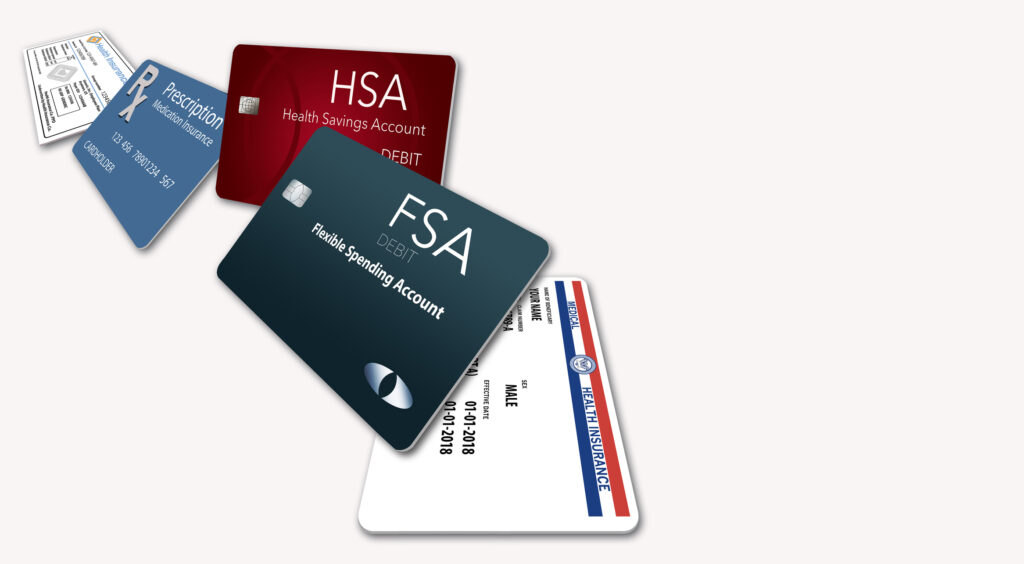If your health insurance coverage includes participation in a Health Savings Account (HSA) or Flexible Savings Account (FSA), lucky you! When you enroll in either account—you can’t be in both—you’ll receive several automatic benefits:
- You will save healthcare money before it’s been taxed.
- Your taxable gross income will be lower.
- Your eligible medical expenses are tax-free.
- You can use the account to pay for qualified medical expenses.
- You’ll use a debit card to pay directly for eligible expenses.
What is a qualified medical expense?
The Internal Revenue Service (IRS) determines which medical expenses can be paid with an HSA or FSA. Both accounts cover the costs of care: prevention, screening, diagnosis, treatment, and relief of symptoms for both physical and mental health conditions.
They also cover the costs of equipment, supplies, and devices necessary to provide appropriate care. The plans pay for legal medical services by physicians, surgeons, dentists, and other medical practitioners, such as chiropractors and optometrists.
When you have an HSA or FSA, even your transportation costs are covered when receiving medical care: car expenses, public transportation fares, and ambulance services. If you must travel to another city for care, $50 a night per person for lodging is considered a medical expense.
The list of qualified medical expenses is extensive. It goes far beyond appointments and prescriptions. You can find the entire IRS list of what’s covered—and not covered—here.
What’s the difference between an HSA and an FSA?
Although the accounts have similar benefits, there are some significant differences. If your employer or health insurance plan offers both options, it’s important to learn about them and determine which is best for your situation.
Health Savings Account (HSA): A tax-exempt account for people with a High Deductible Health Plan (HDHP), including people who are self-employed. The HDHP deposits a portion of the insurance premium into the HSA. You can also make pre-tax contributions to your account. These funds can be used to pay for qualified medical expenses, copayments, and to meet the plan’s deductible.
Your HSA earns interest, and any unused balance can roll over from one year to the next, so you can build up a reserve. You always own the HSA, even if you change plans, quit, or retire.
Flexible Spending Account (FSA): An employer-sponsored account that allows you to contribute pre-tax earnings to pay for qualified medical expenses and other expenses, including dependent care. An employer may choose to add funds but are not required to. Employees declare how much they want to set aside for the year; each paycheck automatically makes a direct deposit into your FSA. A benefit of your FSA is that your entire annual balance is available on day one of the plan year.
Any unused contributions are lost at the end of the year, although the IRS allows each employer the option of permitting you to carry over up to $660 or a grace period of up to 2 ½ months, but not both. If you quit or retire, your employer keeps any remaining money in your account.
It’s up to you to keep track of your account so you can make sure to spend the entire amount.
How can you maximize your HSA or FSA benefits?
To really get the most from your account, follow these tips to plan for the year and decide how much to contribute:
- Calculate the cost of your deductible and include it in your HSA/FSA annual budget.
- Become familiar with eligible expenses and items. Visit the HSA Store and FSA Store to see what’s covered. You may be surprised to see what’s available.
- Estimate how many routine visits are made to doctors, dentists, and other providers each year—and the copay costs.
- List your prescription and over-the-counter medications, such as ibuprofen, cough syrup, and antacids. Most are eligible for your HSA/FSA.
- Plan for the cost of elective procedures, like orthodontia, joint replacement, or LASIK surgery.
- Use your HSA/FSA debit card to pay for all eligible expenses, including weight loss products, tampons, and contact lenses. You can also submit store receipts to your plan administrator.
- If you have an FSA, use unspent funds to stock up on eligible items at the end of the year. It’s “use it or lose it” with your FSA, so spend every dollar in your account.
- If you have an HSA, plan for the future. Your tax-free contributions can be saved indefinitely for unexpected procedures, healthcare after retirement, or withdrawn (tax-free) for qualified expenses.
What else should you know?
FemmePharma wants to help you stay well. Did you know you may be able to use your HSA/FSA benefits to get reimbursed for Mia Vita purchases? Click here to find more ways to enjoy a smart and healthy lifestyle. https://femmepharma.com/hsa-fsa-benefits/
Sources:
2025 FSA-Eligible Items & FSA Eligible Expenses, MetLife, New York, NY, 11 November 2024. Accessed online 15 February 2025.
HSA v. FSA: What are the differences? Comparison Chart, Human Resources, Columbia University in the City of New York, 12 November 2024. Accessed online 15 February 2025.
Internal Revenue Service, Publication 502 (2024), Medical and Dental Expenses. Accessed online 15 February 2025.
Internal Revenue Service, Publication 503 (2024), Child and Dependent Care Expenses. Accessed online 15 February 2025.
Internal Revenue Service, Publication 969 (2024), Health Savings Accounts and Other Tax-Favored Health Plans. Accessed online 15 February 2025.
People with coverage through a job: Using a Flexible Spending Account (FSA), HealthCare.gov.
Accessed online 15 February 2025.
The Difference Between A Flexible Spending Account (FSA) and A Health Savings Account (HSA), National Institutes of Health, Office of Human Resources, October 2020. Accessed online 15 February 2025.
Understanding HSA-eligible plans: How HSA-eligible plans work, HealthCare.gov. Accessed online 15 February 2025.
